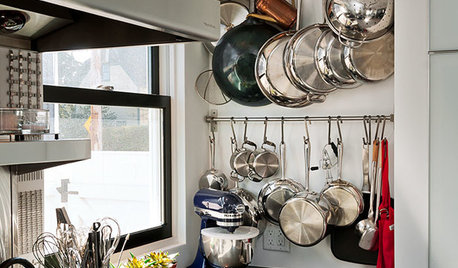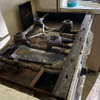Drain pans - good for home, bad for water heater?
16 years ago
Featured Answer
Sort by:Oldest
Comments (15)
- 16 years ago
- 16 years ago
Related Discussions
Worth it to drain/flush the water heater?
Comments (4)Everyone's situation is different. Difficult to quantify for your particular situation. It has less to do with water heater design per se than it does with individual situations. But, to answer your question, yes. It will extend the life of any water heater. How much? Depends....on factors that you will not be able to determine. However, if you think you should expect 20 years out your residential water heater -- any mfgr's residential water heater -- I suggest you make a mental adjustment. I flush mine twice a year. They go bad anyway, in due course. More important IMHO is making sure there's a place for the leaking water to go when it does go bad. They all fail the same way -- they leak. If you're on a slab like I am, you'd better be sure there's a safe, no-damage pan and drain-path underneath the unit....See MoreWater heater pan
Comments (1)Bricks are the preferred material because they will not rot or rust if they get wet. The only code rules that you should be aware of is that both the Temperature & Pressure Relief Valve (T&P Valve) and the Pan must have a drain line to the exterior of the house or to an approved "indirect waste Receptor". The T&P valve MAY NOT discharge into the pan....See MoreDraining an Old Clogged Water Heater?
Comments (17)Drum rrrrroooooolll...:) Well after 6 weeks of stalling I finally got er' done! My first attempt to drain the tank did good, I used the "siphon water out thru the cold or hot lines" method. The only glitch was that the 1/2" insertion pipe was too large, it went in about 3" and stopped, it wasn't crud but a junction point, maybe. Used 3/8" and did ok, took over an hour to empty. The odd thing about it was that as it was emptying (thru translucent pex line) I used a flashlite shining thru the line and did not see much crud getting sucked up, guessing most is rock hard? Thanks for the support to All of you! In a nutshell it was just 3/8" pex connected with an L to a 1/2" water hose (super glue and clap :) The end of the outflow was 5' lower than the WHeater. The best way to get the siphon started was to force water (via another hose) up the line until it comes out at the WH end, then shout to wife to unplug the water and immediately insert the 3/8" pex end into WH, I used the hot outlet, worked a-ok. Thanks again for the help!...See MoreStanding water in gas heater pan..dangerous to wait?
Comments (3)The water may have come from someone triggering the T&P Safety Relief Valve. I'd clean the pan, address the issue of it not draining and then keep an eye on it. If there is a drain line, it's probably clogged with mold....See More- 16 years ago
- 16 years ago
- 16 years ago
- 16 years ago
- 16 years ago
- 16 years ago
- 16 years ago
- 16 years ago
- 15 years ago
- 15 years ago
- 15 years ago
- 15 years ago
Related Stories

GREAT HOME PROJECTSHow to Switch to a Tankless Water Heater
New project for a new year: Swap your conventional heater for an energy-saving model — and don’t be fooled by misinformation
Full Story
GARDENING AND LANDSCAPINGBid Bad Garden Bugs Goodbye and Usher In the Good
Give ants their marching orders and send mosquitoes moseying, while creating a garden that draws pollinators and helpful eaters
Full Story
SAVING WATER11 Ways to Save Water at Home
Whether you live in a drought-stricken area or just want to help preserve a precious resource, here are things you can do to use less water
Full Story
BATHROOM DESIGNHow to Choose the Best Drain for Your Shower
Don't settle for a cheap fix when you can pick a shower drain that suits your style preferences and renovation codes alike
Full Story
HEALTHY HOME16 Ideas for a Healthy, Feel-Good Home
Making these small tweaks and bigger shifts at home can help you thrive everywhere you go
Full Story
DISASTER PREP & RECOVERYRemodeling After Water Damage: Tips From a Homeowner Who Did It
Learn the crucial steps and coping mechanisms that can help when flooding strikes your home
Full Story
KITCHEN DESIGNHang 'Em or Hide 'Em: 10 Stylish Ways to Store Pots and Pans
Keep cookware neat and at the ready with racks, drawers and creative storage solutions
Full Story
GREEN DECORATINGEasy Green: Big and Small Ways to Be More Water-Wise at Home
These 20 tips can help us all make the best use of a precious resource. How do you save water in summer?
Full Story
FEEL-GOOD HOME8 Tips for Harmony in the Kitchen
Frustrated by the arguments that arise over kitchen duties? Check out these coping strategies
Full Story
SMALL HOMESTiny Houzz Tour: Living the Good Life Their Way
This owner-built home in Australia may be on the small side, but it provides the perfect space for the family’s big dreams to come true
Full Story




bus_driver